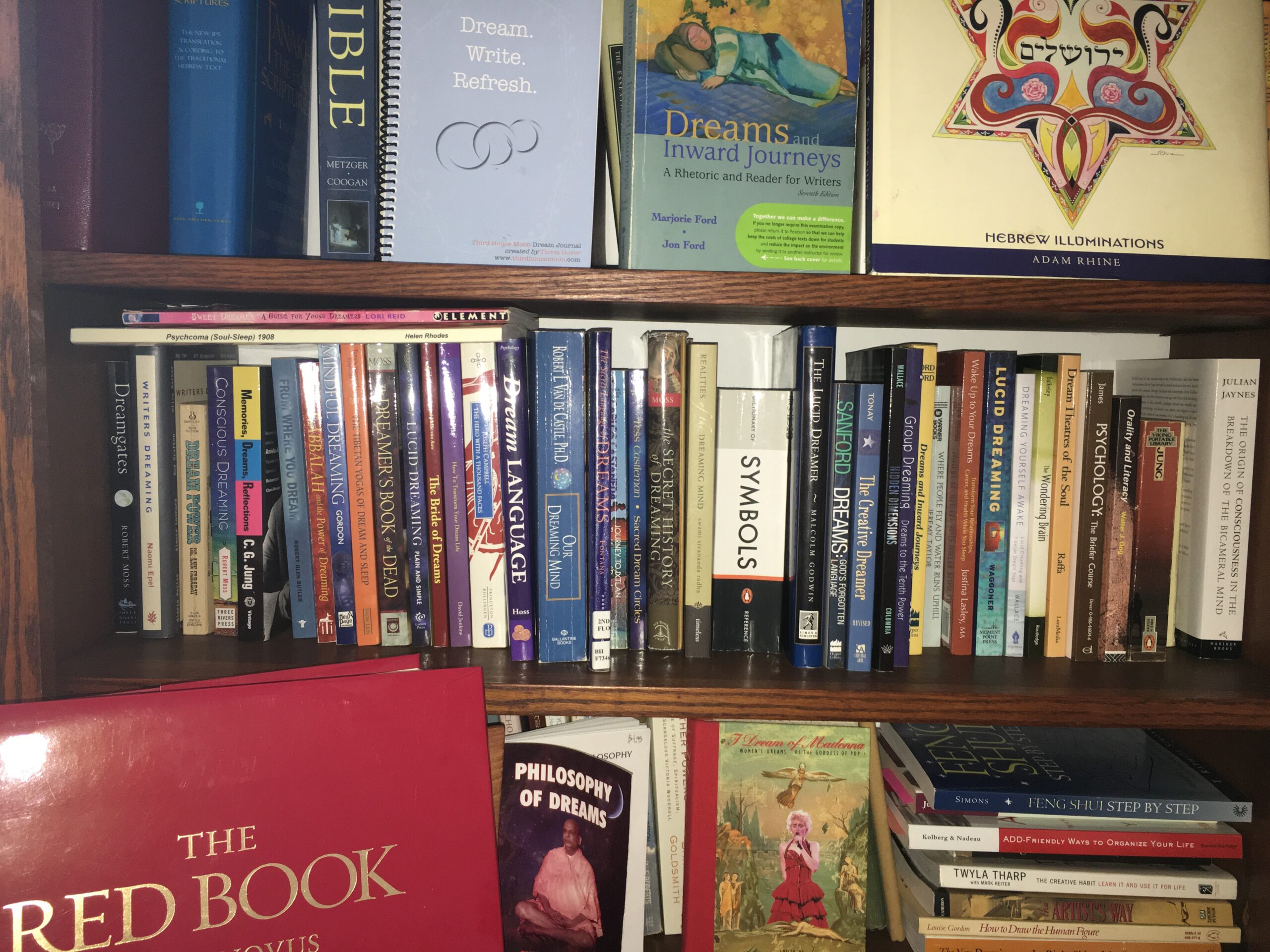
Finding Celia Green, a Female Forebear in the World of Lucid Dreams
Book Review
Lucid Dreams by C.E. Green, London, Hamish Hamilton, 1968
I discovered C.E. Green in a footnote while reading an article online about Lucid Dreaming. C.E., it turns out is Celia Elizabeth Green, born in 1935, who was once the Director of the Institute of Psychophysical Research, Oxford.
How appropriate it seemed to me, to discover an expert in Lucid Dreaming, who also happened to be a PhD, a Research Fellow from Liverpool University, and Director of the Institute of Psychophysical Research … and a woman! … buried in a footnote! After all, isn’t that where women of Green’s generation were so often relegated—to the literal or metaphoric footnotes of the greater stories that were being told? Not only that, but Green’s identity as a woman was tucked discretely behind her initials: C.E.
I was glad to discover that in addition to the names of the men whom I’d read about in the early explorations of Lucid Dreaming (including Frederik Van Eeden, who coined the term in 1913) that there was at least one early foremother in the field, as well. And, since I, as a dream educator hadn’t read Green’s work until now, I wanted to share her book with others, as well.
Green’s book, Lucid Dreams, (London, Hamish Hamilton, 1968) is a patient and comprehensive study of lucid dreams (LDs) and out Out of Body Experiences (OOBs) focusing on 10 subjects, including, importantly, van Eeden, along with Oliver Fox, P.D. Ouspensky, Dr. J.H.M. Whiteman, and, speaking of women, a subject referred to only as “Mrs. Arnold-Forster”*.)
By the time I finished reading Green’s book it was festooned with yellow sticky notes, as on nearly every page I found another thought-provoking insight.
For example, Green speaks of similarities between the conditions that create many spontaneous lucid dreams and spontaneous out of body experiences: Stress. Dreamers often first discover their ability to gain lucidity in a dream when they have a nightmare, and at the peak of terror realize, this is only a dream! Likewise, people are often catapulted into out of body experiences involuntarily when they experience a terrible accident such as a car crash. (p. 38). Once people experience LDs or OOBs, they might consciously attempt to enter these states of consciousness voluntarily, which is achievable for most people with practice.
Thinking about the role stress plays in inducing LDs and OOBs made me think about the possible physiological reasons we are capable of dream lucidity and OOBs to begin with. Adherents to Tibetan Dream Yoga master Lucid Dreaming to prepare to crossover into death, so they might navigate the territory skillfully. I have long suspected that dreams are as close as we can come to peering into what lies beyond life itself. The idea that LDs and OOBs are sparked spontaneously by stressful situations hints that there might truly be a connection, and that we might be hardwired for different forms of consciousness for a reason. It makes sense to me that dreams are connected to our ultimate experiences of crossing over into death, a moment when our consciousness may also become disconnected from our bodies and continue to function in some form.
From a purely physiological perspective, death, no matter what the conditions that cause it, must be a stressful event for the body, and so it certainly meets Green’s criteria for a stressful event that could spark lucidity. In this case, if one is practiced at maneuvering within the lucid dream state, it could well ease the transition from one state of consciousness (in life) to the next (after death).
Another observation Green makes about many of the dreams she studied, is that LDs often involve themes of falling, flying, or traveling through tunnels. This could represent she writes, “Long displacements in space, possibly including a displacement in time as well.” (p. 60) Ruminating on this, I considered how LDs and OOBs also parallel shamanic journeys, which are a form of waking vision or lucid dream, in which moving to higher or lower worlds and beyond linear time is also a key feature. In Shamanic journeys, one climbs down holes in the ground, travels through tunnels, or flies into higher realms to meet various spirit guides and helpers. This connection between journeys and dreams was something I don’t often see articulated, but which I’d like to explore more.
On page after page of Green’s book I found more bits of information, observation, and assimilation of knowledge that had me nearly jumping out of my seat with excitement. But all of my circuits lit up when I came to this paragraph on page 130, which I marked, inarticulately, with an exclamation point that fills the yellow sticky note from corner to corner. Green writes:
In Chapter 5 we have referred to a subject who, during lucid dreams started from a waking state, was able to report her experiences to investigators. This suggests the possibility that it might be possible to train subjects, lucidly dreaming during sleep, to exercise sufficient control over some, at least, of their motor functions to signal the experimenter. (p. 130)
About a decade later, two different scientists (Dr. Keith Herne in 1975 at Hull University in the UK and Stephen LaBerge at Stanford University a few years later) would do just as Green suggested here.
As an unabashed feminist, I am happy to recommend Green’s book to my students who are now enrolled in the Institute for Dream Studies Certification Program, as well as to anyone else interested in the study of dreams in general, and lucid dreaming in particular. And I do this not merely because Green is a woman, but because her work is still relevant, thought-provoking, and inspiring these 5-plus decades after its publication.
And sure, the fact that a woman of her generation had such an important role in the understanding of lucid dreaming—well I won’t lie—that makes me really happy to know. Having female role models** such as Green makes it that much easier for the rest of us to dream big, too.
Fabulous Footnotes:
* For anyone interested in studying earlier works by women in the field of Lucid Dreams, look into the work of Mary Arnold-Forster, who is an author in her own right. You can begin here: http://chestofbooks.com/new-age/dreams/Studies-In-Dreams/. And let us know what you learn, when you do.
** I’m happy to report that we’ve come a long way since Green’s time, when it was rare to find renowned women researchers and scientists. Today in the field of lucid dreaming there are women conducting groundbreaking research including Jayne Gackenbach and Ursula Voss among others. Clare Johnson, another lucid dreaming expert, also has highly recommended books out on the topic.
Interested in diving deep into the study of dreams of all kinds? Apply today for the Institute for Dream Studies Certification Program, with new classes for people interested in studying dreams for professional development and personal growth beginning this fall.
Copyright 2016, 2018 Tzivia Gover
ZZZzzzZZZzzzZZZ
Speaking of books to read on sleep and dreams:
My book The Mindful Approach to a Good Night’s Sleep is chock full of information and exercises to support you in sleeping and dreaming better. Order yours now and give yourself the gift of a good night of sleep & dreams!
